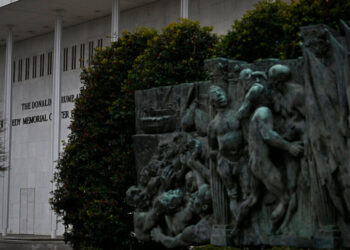Ex-GOP operative floored by Bannon’s stunning admission: ‘They did it and got nothing!’
MAGA ally Steve Bannon’s stunning admission about the fate of Elon Musk’s Department of Governmental Efficiency floored a former GOP...
Judge blocks release of Rob Reiner and Michele Singer Reiner autopsy findings
A Los Angeles Superior Court judge has agreed to bar the release of Robert Reiner and Michele Singer Reiner’s autopsy...
Trump looks surprisingly close to securing a good Ukraine deal
Tell us if you’ve heard this one before. Ukrainian President Volodymyr Zelensky walks into a meeting with President Donald Trump....
‘Gravely concerned’: Top lawmaker sounds off on Trump’s major foreign policy claim
A top Democrat on the House Foreign Affairs Committee sounded off during an interview on CNN over President Donald Trump’s...
Idris Elba and Cynthia Erivo Make King Charles’s New Year Honors List
The actors Idris Elba and Cynthia Erivo were among those recognized by King Charles III on Monday in his New...
Snowbirds on hook for $60K in NYS taxes after panel doubts their move to Florida
A pair of Empire State snowbirds just learned it’s not easy to fly the coop. An upstate couple who relocated...
Watch Jeff Bezos and Lauren Sanchez party in St. Barts
Jeff Bezos and Lauren Sánchez are kicking off the new year in St. Barts. The couple — who spent Christmas...
More Kennedy Center Performances Are Canceled After Trump’s Renaming
A prominent New York dance company on Monday said it was canceling its performances at the John F. Kennedy Center...
Tom Hiddleston Teases Loki Return in ‘Avengers: Doomsday’: ‘It Is Monumental’
It seemed back in 2018 that Tom Hiddleston’s time with Marvel had come to an end when Thanos killed Loki...
Tech giants to test if AI can be the main selling point for consumer gadgets at CES
At CES, the annual consumer technology conference happening in Las Vegas next week, the biggest names in tech, including Nvidia...














